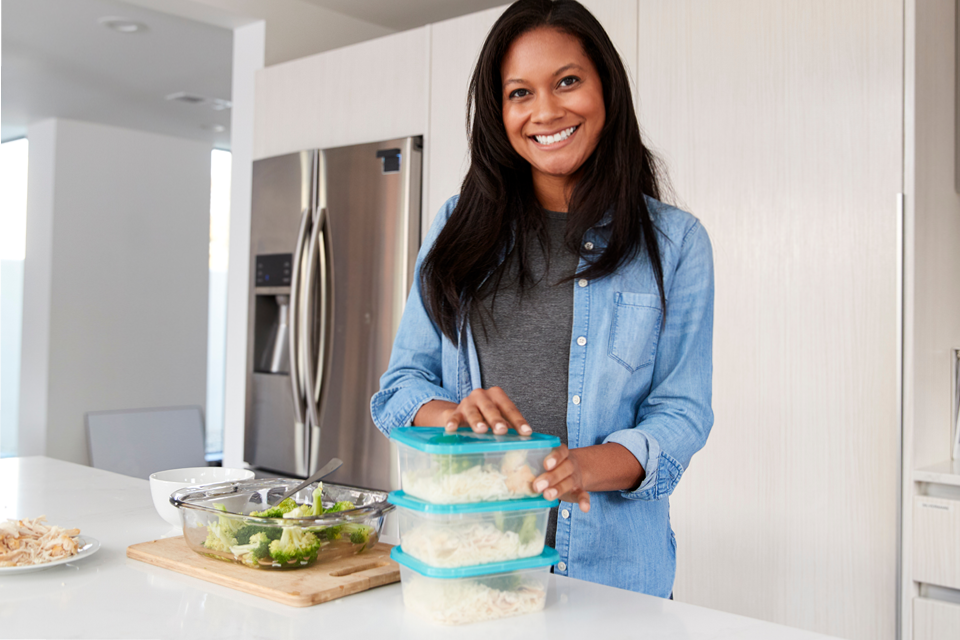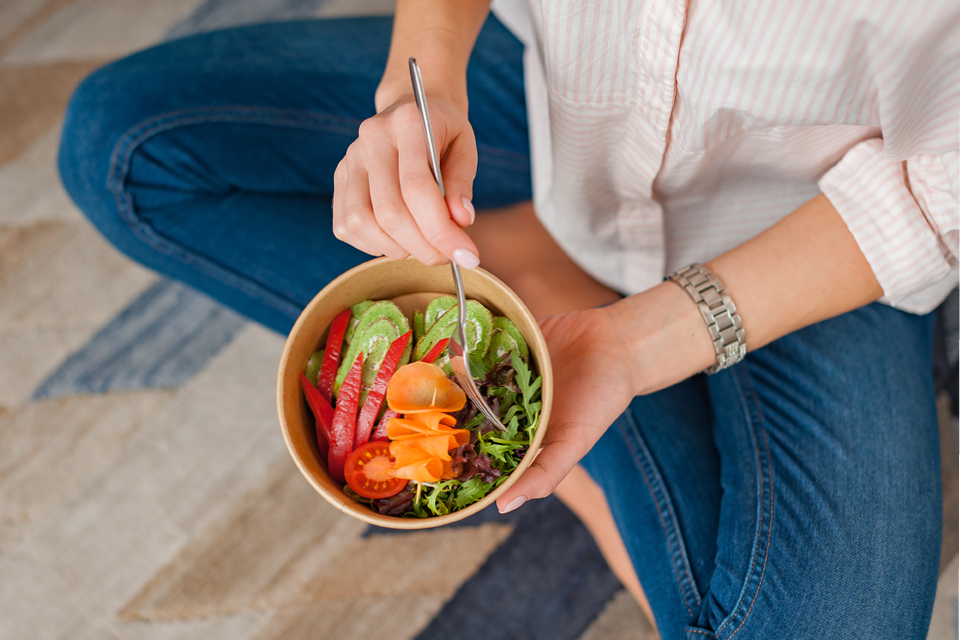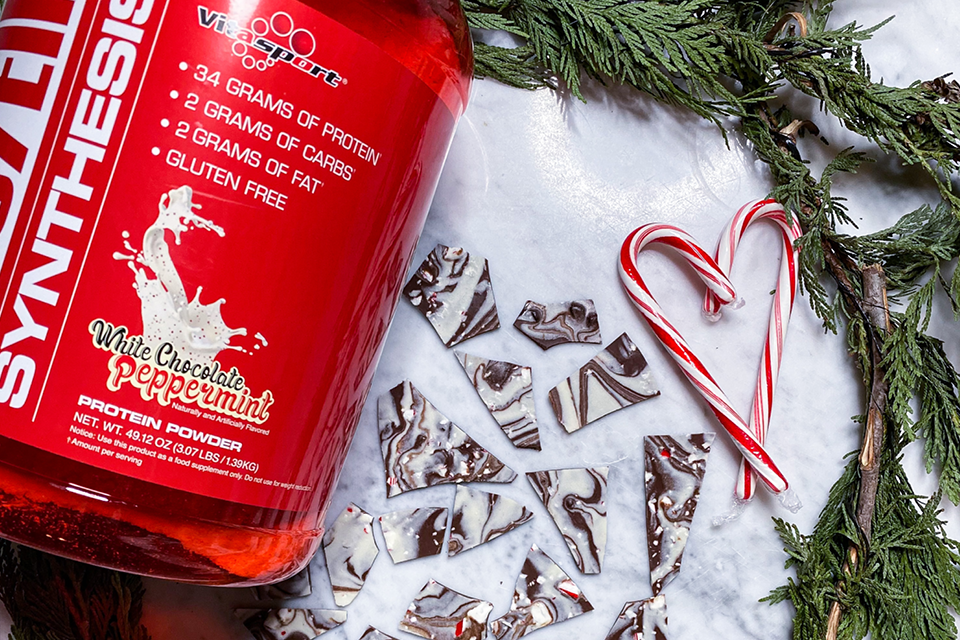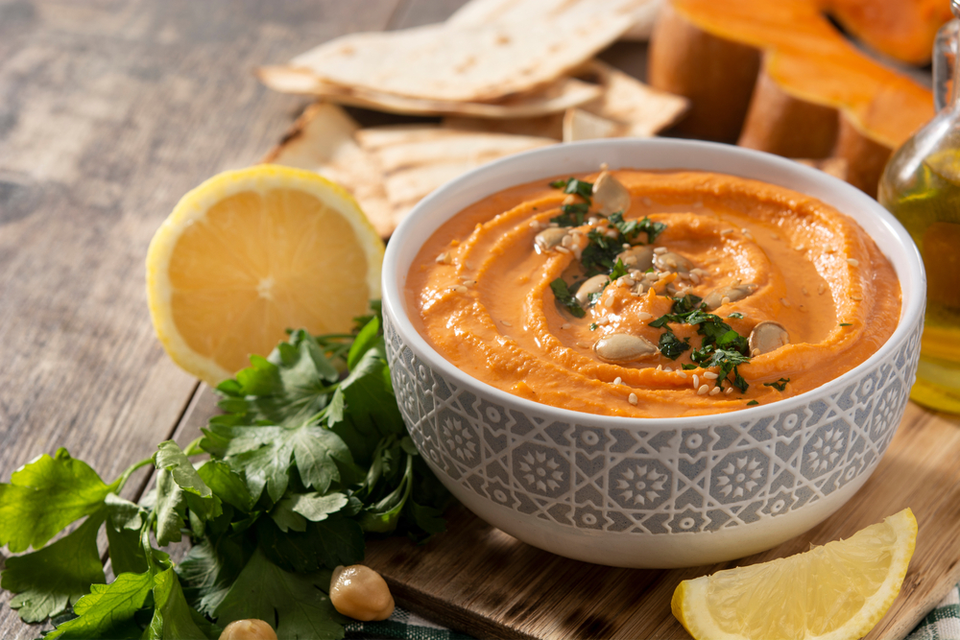Developing and maintaining good nutrition habits requires intention…and planning! One of the things people struggle with the most is nutrition. In many cases, making "not so great" food choices happen more often when healthy (and delicious) food isn't at your fingertips.
After all, when you're hungry, you're hungry! Most people will grab whatever is the most convenient rather than eat something that keeps them on track with their goals. However, these three simple steps can help you eat healthier every week.
1. Build a mental framework for your diet and focus on moderation.
Decide what a REALISTIC healthy diet looks like to you. Is it salads with protein for lunch? Lean meat, fresh veggies, and a small serving of rice or sweet potato for dinner? Is it fresh fruit and veggies for snacks instead of chips and crackers?
Regardless of the diet, it is about limiting processed foods and opting for whole foods. The other thing is to focus on moderation. When someone embarks on a health journey, they can get into an "all-or-nothing" mindset with food and health.
But moderation works like this: 80% of the time, eat nutritious whole foods, like vegetables, fruits, whole grains, healthy fats, and lean proteins.
On a practical level, it can work like this: If you eat three meals a day, that means there are 21 meals a week. And 80% of 21 meals is 17. Following the 80/20 rule, you would focus on healthy eating 17 meals a week.
Or, if you'd prefer to break down those percentages by your overall calorie intake, you'd devote 80% to healthy choices. For example, at 1,500 calories a day, that's 1,200 calories of healthier options. At 2,000 calories a day, it's 1,600 calories.
No matter how you do it, no food is ever off-limits with this approach. Many say it helps them create healthier food habits because of the focus on healthy foods vs. deprivation.
The one essential part of this plan is to ensure that your 20% of "treat" eating is actually 20% because it can be easy for those portions to creep up in size.

2. Plan your meals and snacks for the week.
Take the time BEFORE you hit the grocery store to write down your meals for the week and create your grocery list based only on items you NEED. Plan meals that let you double up on ingredients. For example, if you're baking chicken, you can use that chicken to make a chicken stir-fry or toss it in a salad or wrap. Or, if you're making a burrito bowl, use quinoa and then include quinoa in Mason jar salads. By doubling up, it allows you to cook larger portions for leftovers. Leftovers are also great in casseroles and soups!
After you've done all the hard work of shopping, chopping, and cooking, you can decide if you want to keep your meals refrigerated or frozen. If you plan to store your food in the refrigerator, portion your meals into single servings or keep it family-style in a bigger container. If you portion out single servings, you'll have ready grab-and-go meals, which help you stay on track when you're in a hurry. If you don't plan on eating your prepped meals in the next couple of days, the best bet is to prepare them for freezing. Make sure you put your food in the freezer sooner than later, ensuring you store a fresher meal.
Be intentional with planning your healthy meals as well as intentionally planning your treats. After all, life is about balance.

3. Go to the grocery store in the right frame of mind and body.
After a workout, attempt to go to the store so that you feel energized and motivated to eat healthily. When you're there, shop the outside perimeter of the store because this is where all the more nutritious foods are, like fresh fruits, veggies, and lean meats. Opting for seasonal fruits and veggies will save you money because the produce won't have to be shipped from thousands of miles away. It might even come from a farm in your state, which is pretty awesome.
Because it hasn't spent days or weeks getting shipped to you, chances are the produce will actually contain more nutrients! Fresh produce loses its vitamins and mineral content over time, so the longer they sit on a truck or in the store, the less nutrition they have.
Let's say you want to buy something that ISN'T in season. Consider buying it frozen. Not only will it last longer once you get it home, but it'll also probably have more nutrition since it was flash frozen as soon as it was picked.
Also, don't look at the end caps of the aisles. That's where the most tempting sales items are located, like potato chips, snack foods, and processed foods. When shopping the aisles, keep in mind you are being marketed to every minute you are in the store! The items they WANT you to buy are on the center shelves, at your eye level.
About the Author: Brittinie Wick is an Air Force Veteran turned Health and Fitness Coach who founded Brittinie Wick Fitness. Her mission is to empower all women, through fitness and nutrition, to gain confidence, lose weight, and celebrate the feeling of strong and sexy. Grab her “Healthy at Every Age” guide! This ebook is aimed at people just like you, who want to live their BEST, MOST ACTIVE life, starting TODAY and continuing deep into the future!









